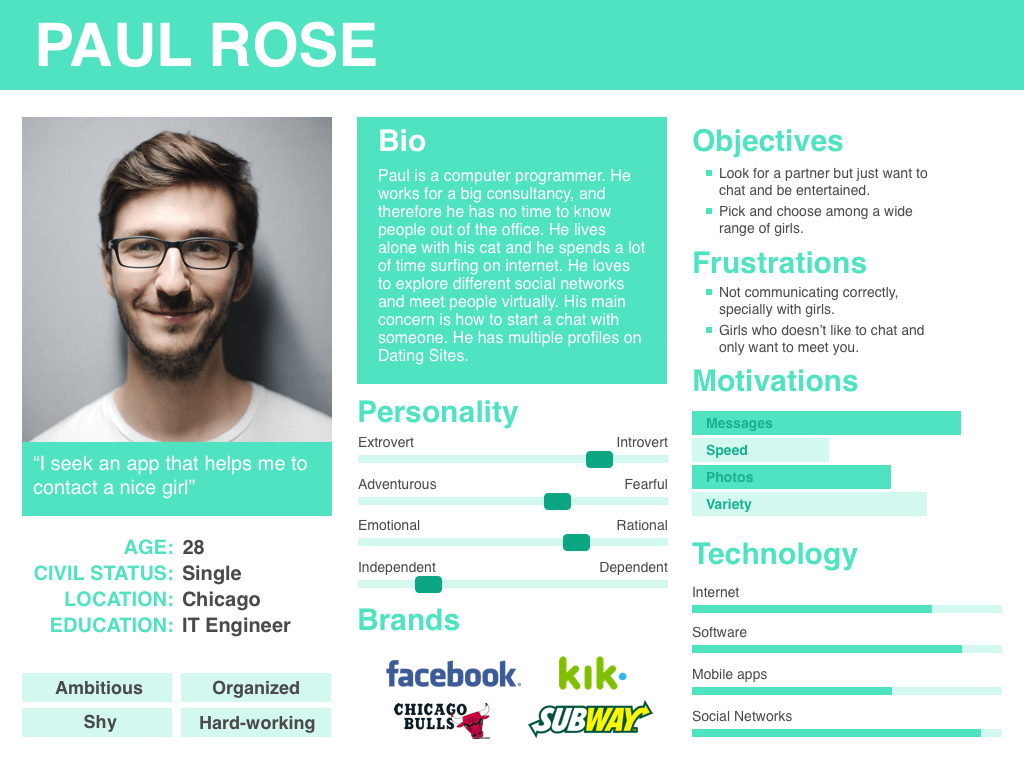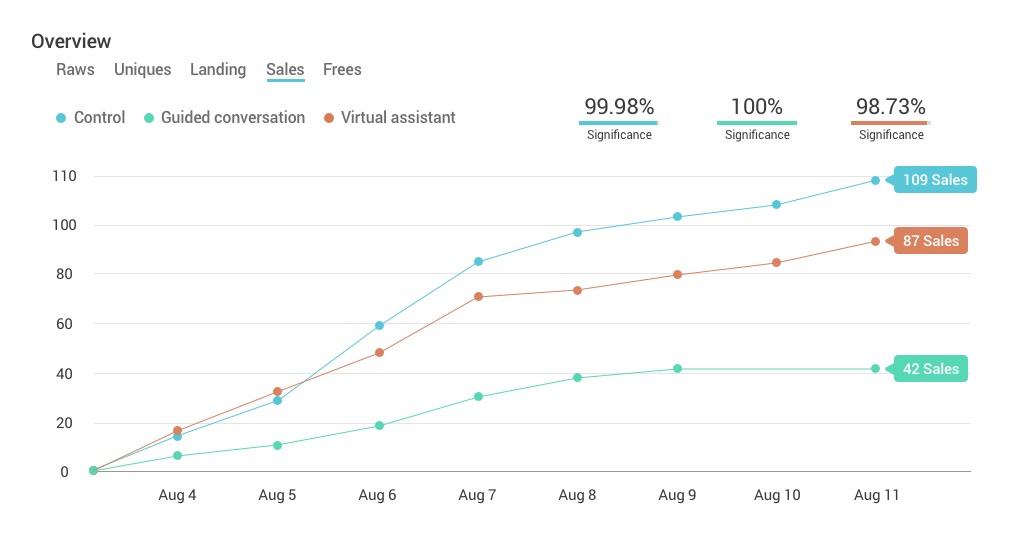Online campaign based on a chatbot flow to get more engagement within the site.
1. Design challenge
We want to boost the user engagement of our product, and drive them towards certain actions that increase conversion.
2. User research
We started doing a competitive analysis to find out strengths and weaknesses of current and potential competitors. This helped us to define the nature of the industry and determine who the competitors are. At the same time we discover new market trends that can apply to our product in order to be closer to users.
Then we drove multiple sessions to create user-personas that enable us to focus on a manageable and memorable cast of characters, instead of focusing on thousands of individuals. We followed two type of insights, on one hand the data taken from the product through our own tracking tools, and in the other hand the knowledge of the marketing department lead, who has been working for the industry more than 5 years.

3. Ideation
Looking at what we gathered in the research phase, we concluded that the best idea to achieve our goal was to produce a CHATBOT. They will soon become as commonplace as automated phone systems, only much more interactive and interesting. If customers have a positive interaction with the product, they are more likely to convert.
Beyond that, we have two clear evidences that endorse our decision:
- Being a Dating Site, our users are used to interact with this kind of technologies, as illustrated by the competitive analysis.
- Users are always looking at new features, and things that offer them something unique, as reflected in the user-persona.
4. Design
The first decision we had to make was what type of Chatbot should we build. At this point we saw two options:
- A guided conversation with a bot that simulates to be a real person.
- A virtual assistant that helps the user to find the right girl to him.
For that purpose, we sketched both choices to get an idea of which flow suits better to each option, trying to find potential problems and doubts that could arise.
The next step is define all the general aspects that have an impact on the Chatbot. The main point is develop a decision tree to understand the entire flow. This was perhaps the most difficult part of all because if this fails, the entire user experience will break and thus, the chatbot shall be repaired.
The language is also a very important thing here, and we should pay attention to how we communicate and how the user perceives this messages. This is what builds the chatbot personality, and in addition should be raised in the early stages.

Finally, we decided to create hi-fi prototypes because another important aspects were the microinteractions and animations. This can cause that the users move forward, or on the contrary, they drop off the application.
5. Testing
In this last stage, it is time to test the Chatbot with real users. We recognized the need of having quantitative data, as well as qualitative. With the qualitative data we can get valuable insights about user engagement and usability issues. Furthermore, the quantitative data will show us if the product is working in terms of conversion.
For the qualitative data we conducted a usability lab study at our office. We prepared one room containing the lab with the system being tested for usability and all the other necessary equipment such as cameras to record the session. We observed the behaviour of the users we brought for the test, and we obtained very useful feedback, not only during the session, but afterwards.
We used a form based on the Likert scale to measure mainly user engagement and identify how long it took to complete the specified task. With this information, we continued working on the prototype to fix some details before releasing the final Chatbot.

Once we were satisfied with the improved prototypes, we moved to the next level: A/B test with massive real users. The results will give us only objective numbers of conversions, that will probe if we designed the correct UX strategy, and will help us to choose one of the Chatbots as a winner to continue doing iterations of it.
In our case, the A/B test verified that our users would be more willing to convert with the virtual assistant than with the fake girl. This is something we also detected during the user lab study, because some users were remarking they prefered to know from the very beginning that the bot is a bot and not a girl. In any case, we needed data to confirm this assertion.

